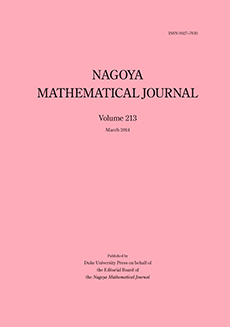Abstract
The sign of a Latin square is if it has an odd number of rows and columns that are odd permutations; otherwise, it is . Let and be, respectively, the number of Latin squares of order with sign and . The Alon-Tarsi conjecture asserts that when is even. Drisko showed that for prime and asked if similar congruences hold for orders of the form , , or . In this article we show that if , then only if and is an odd prime, thereby showing that Drisko’s method cannot be extended to encompass any of the three suggested cases. We also extend exact computation to , discuss asymptotics for , and propose a generalization of the Alon-Tarsi conjecture.
Citation
Douglas S. Stones. Ian M. Wanless. "How not to prove the Alon-Tarsi conjecture." Nagoya Math. J. 205 1 - 24, March 2012. https://doi.org/10.1215/00277630-1543769
Information




